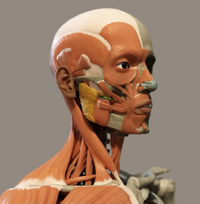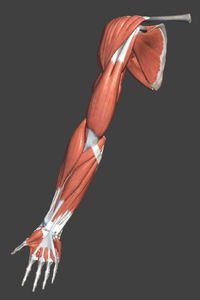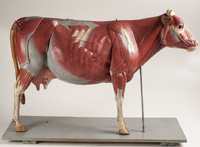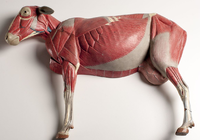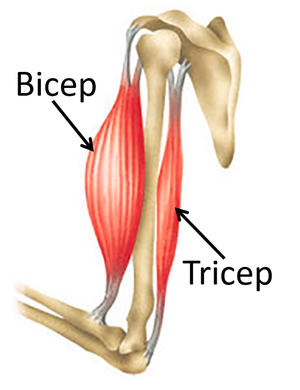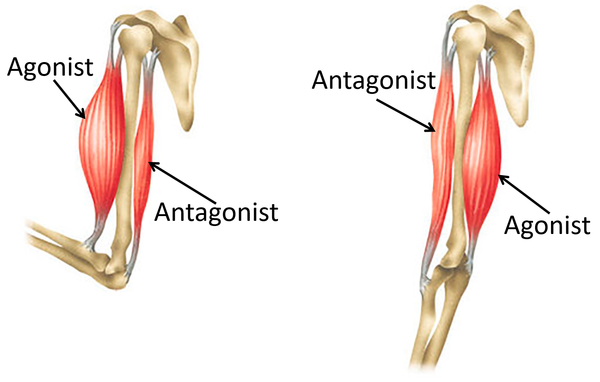Difference between revisions of "Muscle"
| Line 38: | Line 38: | ||
{| class="wikitable" | {| class="wikitable" | ||
|- | |- | ||
| − | |[[File:AntagonisticPair.png|center| | + | |[[File:AntagonisticPair.png|center|600px]] |
|- | |- | ||
| − | | style="height:20px; width: | + | | style="height:20px; width:600px; text-align:center;" |When a [[muscle]] [[contract]]s it is called the 'agonist' and when it relaxes it is called the 'antagonist'. |
|} | |} | ||
Revision as of 09:41, 13 September 2018
Contents
Key Stage 1
Meaning
A muscle is a part of the body that makes us move.
Key Stage 2
Meaning
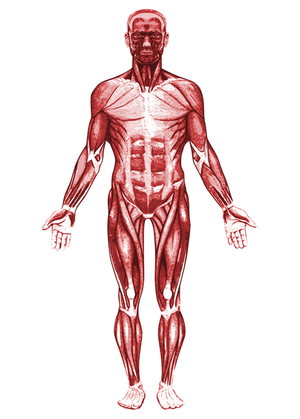
This picture shows the muscles covering the human skeleton.
A muscle is a part of the body that can get shorter or longer to allow us to move about.
About Muscles
- In a human the muscles are attached to bones in the skeleton.
- Muscles can relax which means get longer or that can contract which means they get shorter.
- When we exercise it makes our muscles bigger and stronger.
Examples
| The muscles in the human face. | The muscles in the arm. |
| The muscles covering a cow skeleton. | The muscles under the skin of a sheep. |
Key Stage 3
Meaning
Muscles are organs in the muscular system which allow us to move.
About Muscles
- Most muscles come in antagonistic pairs. This means when one contracts the other must relax.
| When a muscle contracts it is called the 'agonist' and when it relaxes it is called the 'antagonist'. |
